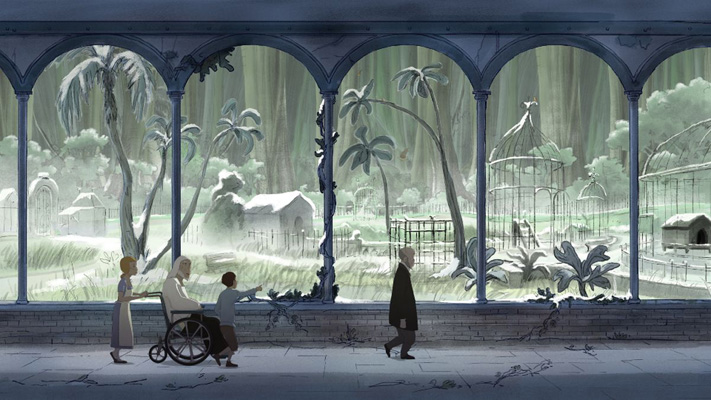A Destination for the Princess
in 25th Schlingel International Film Festival for Children and Young Audiences, Chemnitz
Taking part in the 25th Schlingel International Film Festival for Children & Youth is my first judging experience since joining the prestigious FIPRESCI federation. For the past seven days, I have watched 15 feature length films from 12 countries. Although watching films online doesn’t compare to the feeling you get watching films on the big screen and next to the audience, in the context of the Coronavirus outbreak there is no other option, at least for those who have travel restrictions.
I have had the pleasure of being in the team with other experienced FIPRESCI jury members such as Holger Twele from Germany and Seray Genc from Turkey. We have been evaluating and discussing the festival and the films through zoom meetings and WhatsApp calls. However, Holger has been fortunate to be able to watch the films on the big screen in Chemnitz.
Besides awarding the FIPRESCI prize to the film Moon Rock for Monday (2020), directed by Kurt Martin from Australia, the animation film The Prince’s Voyage (Le voyage du prince, 2019), directed by Xavier Picard and Jean-Francois Laguionie really caught our attention. It is a co-production made between France and Luxembourg and was produced in 2019.
Whenever I want to write a review about a film, the first thing that comes to mind is a saying by Roland Barthes “Some people publish a story’s synopsis instead of review”. This is very true and I always try to pay attention to it and devote only a very small part of my writing on retelling the storyline of the film.
The Prince’s Voyage tells the story of a 12-year-old monkey boy that lives in a land called Nioukos. One day he finds a wounded old man and creates a strange adventure in his land.
The idea and style of the film consists of a hidden Darwinism that seeks to artistically interpret the sequence of genes into a civilized world. The main story and sub-stories of the film are full of influential moments that can establish a deep connection with the subconscious of their audiences anywhere in the world and make them aware of issues such as civilization, power, crisis and resistance to change.
The characters of the film, which are designed in the shape of monkeys, have found a human figure with precise and professional movement, and this makes the audience identify with them in moments and become more associated with the lower layers of the story.
The two-dimensional technique of this animation is far removed from the productions of huge companies such as Walt Disney and Pixar, which use the standards of computer games in mass production, and the artistic form of the film is strengthened by the different perspective it has towards animated filmmaking. On the other hand, the two-dimensional technique of the film has strengthened the feeling of nostalgia for the overall atmosphere of the story and viewers can follow this from an historical perspective.
The exoticism here comes from the perceived sense of the image of those who belong to a distant land but are inversed in such a way as if they live with us, and this has formed the structural content of the film, an element that is further highlighted by the post-production values of influential music and intelligent sound.
In the end, it should be said that all the narrative and stylistic elements serve the general harmony of the film and no element is superior to the other, and this is how you come across a memorable animation that can claim to have a lasting effect and therefore a legacy in the history of animated cinema. I think watching this film was the biggest achievement that, among other advantages, made attending the Schlingel Festival memorable for me.
The other important films of this edition that I recommend watching due to their attractive narration and clever direction are: My Little Sister (Sestrenka, dir. Alexander Galibin, Russia, 2019), The Black Mill (Czarny młyn, dir. Mariusz Palej, Poland and Czech Republic, 2020) and That Night’s Train (Ghatare An Shab, dir. Hamidreza Ghotbi, Iran, 2019).
I hope that one day we will all see the films on the big screen together again and be able talk about them.
Hamed Soleimanzadeh
© FIPRESCI 2020
Edited by Steven Yates

